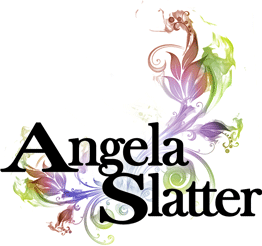
Art by Kathleen Jennings
You’ve been writing for a while. Several years, in fact. You’ve even been publishing some (or a lot) of what you write.
All those stories are defunct, right? After they’ve appeared, and gone through the awards cycle (where they either got shortlisted, won something, or disappeared into the void despite the fact that you thought it was one of your Best Stories Ever), they’re totes dead, yeah? Desiccated word corpses littering the landscape of your career?
Nope.
They’re backlist, and they can keep earning you a living (or part of one) and your name and work in circulation. Traditional publishers (and a lot of authors) think in terms of a month: “Will it sell enough in a month to pay for it itself or at least make decent sales figures reading in the next report?” If the answer for the publisher is “no”, then there’s a good chance it will be forgotten like a red-headed stepchild. But the redheaded stepchild can and will rise again.
Some of my favourite people have fallen prey to the mindset that old stories are simply done and gone. You know who you are, and know that I love you – you can tell that I love you coz I’ve yelled at your about your backlist, and on occasion bullied you into putting together a short story collection, or other new-old thing.
So, my five points about what all those “dead” stories can become are:
- Single author collections:
If you’ve been writing and publishing for three to five years (or longer) with an average of five to ten stories per year, then you’ve probably got a decent number of tales that could be collected together (and it doesn’t have to be just one collection). It might be broadly themed, or a Stonecutters’ “Royal Sampler”. It’s the sort of thing that will generally appeal to small publishers (trade publishers seldom do short story collections for anyone except Famous Authors Who Will Sell), so the small and indie press will be your target market.
Make sure you do your research about the presses you approach: ask authors who’ve been with them about their experience. No advance, but royalties are paid on time? That can work. No advance and you’re continually having to chase for royalties every damned year? That won’t work. Is the editor there an actual editor with experience and knowledge or a plucky and enthusiastic amateur who doesn’t know where to put an apostrophe? Are the books pretty – i.e. will a reader pick them out of a lineup and buy them based on both blurb and cover? Or will the cover make them shriek “Sweet Jebus, what is that?” and run away? Are the layout and design professional looking? Do they have distribution networks? Can they turn your files into e-book files that look right rather than a word Picasso?
You might already have had collections published over the years and forgotten about them. They’re out of print and gathering dust on your shelves. They might have been produced before the rise of the e- and audio book. That’s collateral right there that can be repackaged and introduced to a whole new generation of readers. Again, generally the small and indies will be your new home with them.
To note: I’m not fond of individual author collections called ‘Best Of’ because it implies you’ve done your best work and that’s it. It’s a finite classification that doesn’t sit well with me. This is just my opinion about my own work – other authors can do Whatever They Fecking Well Please. But for me, it’s a no thank you. My literary heir can do a Best Of when I’m dead and there’s nothing more to write – although, if anyone was going to dictate a novel from beyond the grave …
- Reprints in themed anthologies
Keep an eye on the calls for anthology submissions that accept reprints, particularly if they’re themed (which they generally are): you might have the perfect story. Publishers like Flame Tree Press are often bringing out subject-specific reprint anthologies, such as about gothic ghost stories, epic fantasy, classic science fiction, etc. Sign up for their newsletter and you’ll see what’s upcoming. The pay rate for a reprint will be lower than for an original piece, but as you’ve already been paid for this story once before, it’s a bonus to be paid again. Might cover a phone bill or your coffee for a month.
- Translations
Whatever language you’re writing in is not the only language in the world. Keep an eye out when other authors are announcing their works, long and short, going into translation. Check out those markets, try to make contact and see if they’re interested in your work – those will be new markets for you. Sometimes you’re lucky and foreign language publishers will reach out to you: in fifteenish years, I’ve been fortunate enough to be translated into Bulgarian, Chinese, Russian, Italian, Spanish, Japanese, Polish, French, Romanian and soon Turkish.
Caveat: unless you speak the language your story’s being translated into, you won’t be able to check the proof. With luck, the translator will come to you with any questions they have (“This word translates as ‘mega-lobster’ – was that your intention?”) and you can set things straight.
- Podcasts
Podcasts like Podcastle and Pseudopod (among others) will accept submissions of reprint stories to turn into audio. Again, it’s a new medium for your work, and a source of a new audience for older writing. It can be wonderful hearing your words read out loud by someone who knows how to tell a story orally.
Caveat: you won’t get a say in who narrates your story. These places aren’t big budget, they do great work in spite of it, but there’s no room for being a diva. “My tale can only be narrated by a woman, 20-22, of Irish ancestry, with red hair and a slight limp to her left – only then will authenticity be achieved!”
- Chapbooks.
Small or indie presses can take a single story and turn it into a pretty chapbook in both hard and soft formats. Again, those tales that you feel kind of disappeared soon after their birth can be given a new career. I’m going to mention mostly Brain Jar Press here, not because it’s an advert for BJP, but because they’re my main experience in this area and I’ve seen what they can achieve. In terms of short stories and older collections, as Pete from BJP says, treat your shorts like they’re singles from an iTunes store.
They can also take things like your old blog posts and turn them into chapbooks – look at Brain Jar’s Writer Chaps (that “chaps” is for “chapbooks”) Season One. BJP has turned years of writing advice blog posts by myself, Tansy Rayner Roberts, Sean Williams, Alan Baxter, Kaaron Warren and a Mystery Author into compact clever little chapbooks so you can find that advice easily and refer to it over and again.
Did you make some clever tweets? A long-running series filled with awesome info? There’s another thing that can be collected and turned into a chapbook. An address to a convention about “stuff relating to what I do”? A series of poetry/vignette-y things? There’s Kathleen Jennings’ Travelogues chapbook right there.
Those are my five points, now here are some other things to keep in mind:
- The above doesn’t apply to whatever you’re writing now, your primary writing. It applies to backlist, to the blog posts, the tweets, the conference papers. Hell, even if you’ve got a PhD or MA thesis that reads in an interesting fashion (i.e. not written in academic-speak designed to make things completely impenetrable to “the ordinary folk”).
- Pay attention to self-publishing even if you’re not a self-publisher. There are lessons to be learned in terms of delivery and innovation, toolkits, etc. What’s valuable to you as backlist generally isn’t the same as what’s valuable to traditional publishers.
- Maintain a list of your rights, your translations, and what you’ve been paid for everything you’ve sold. That last one can help you identify which piece of work has earned you the most, been most popular in its time, brought you most exposure – and might be likely to be met positively when approaching a small or indie press about some sort of re-package and re-release.
- If you have an agent, then they might do some of the above legwork – it will depend on how supportive they are, how much they think they can get from a commission, how much good they think it will do your career. If they’re not interested, then just let them know you’re doing this yourself and see if they’ll agree to a one-off exception on any agency agreement clauses that might relate to this sort of thing.
- Another thing to think about: depending on the age of the work, it might have been written into a different world. As a writer you might not still hold the opinions that you held then. So, consider this: would you write the same story now? Would you say the same things now? Depict the same sorts of characters? If the answer is “no”, then maybe that story was “of its time” and has had its moment in the sunshine and you should leave it to its dusty retirement.
Even if you’re a relatively new writer and don’t have a backlog of stories to rebirth, if you keep writing and publishing, then one day you will find that you’ve got a nice nest egg of tales that can be repurpose for fun, (re)publication, and hopefully profit.
Thank you to the fabulous Ron Serdiuk and Joanne Anderton for thoughts on, and beta-reading of, this piece.

